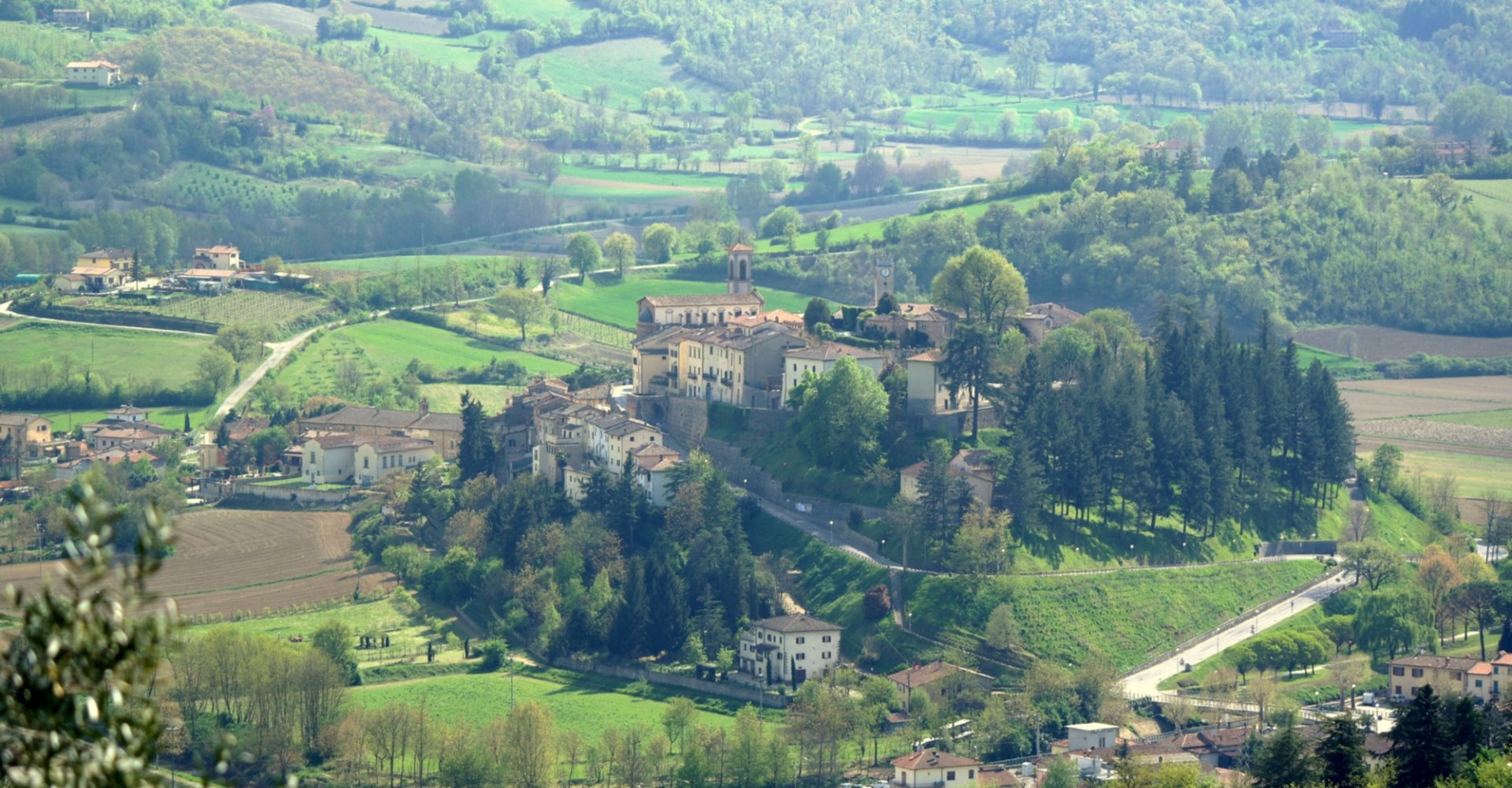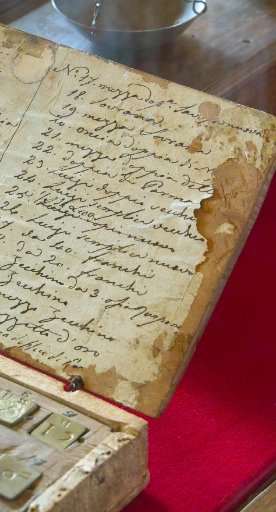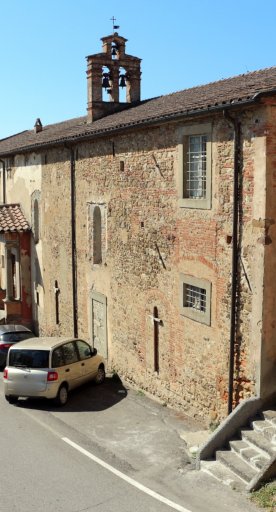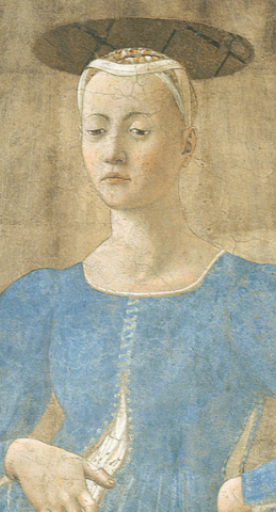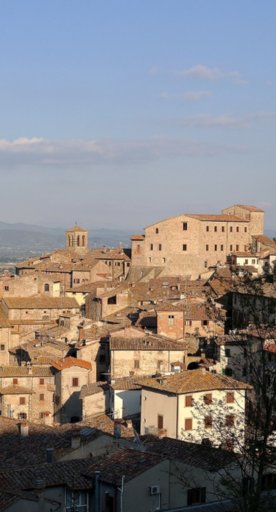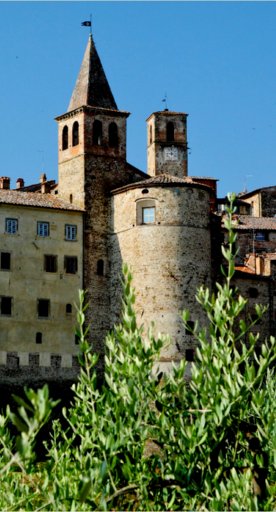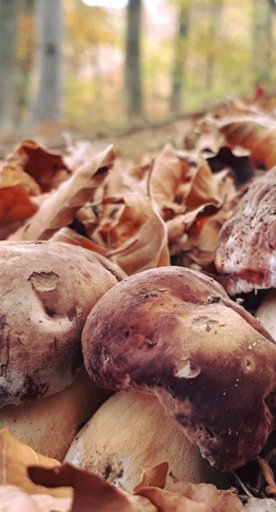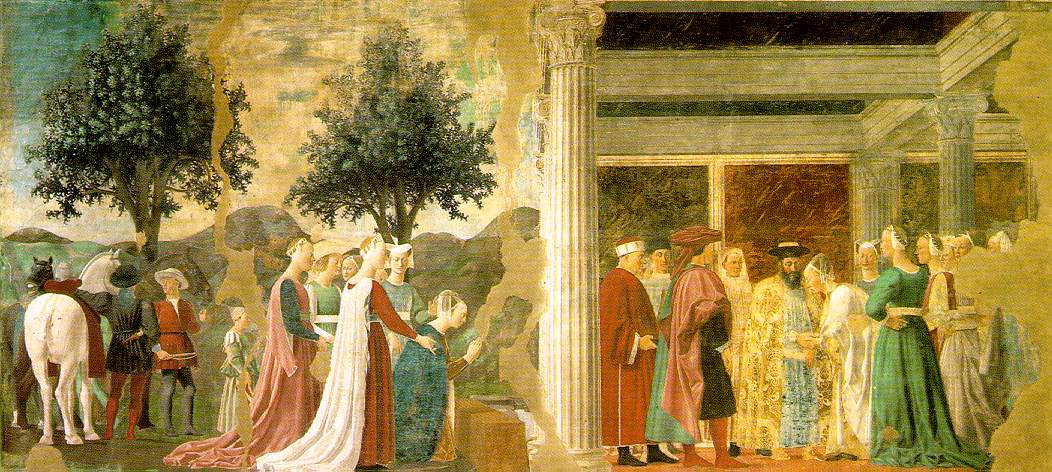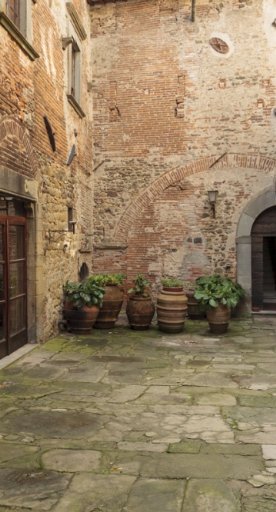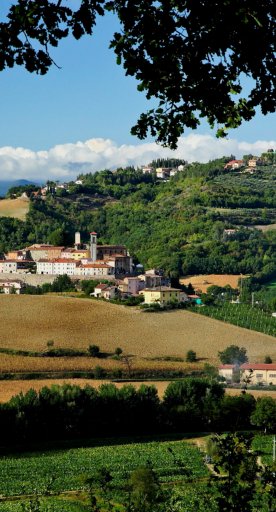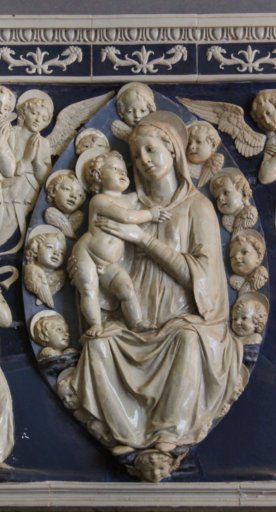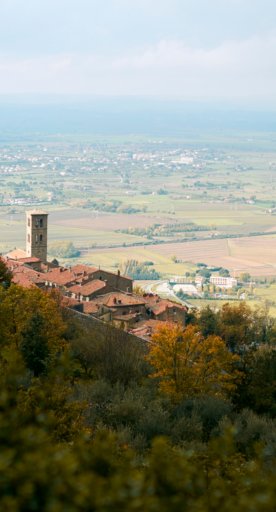Monterchi
A border fortress perched on an isolated hill in the Tuscan Valtiberina
The village of Monterchi perches proudly in the hills of the Tevere Valley, not far from the Citta di Castello and Umbria, surrounded by medieval parish churches and convents. A fundamental stop for whoever wants to retrace the life and works of the maestro Piero della Francesca, one of the Renaissance’s most important artists.
This isolated hill, probably used by a branch of some Pagan cults who worshipped Hercules, was once called Mons Herculis, and later Monterchi. The area coincides with the southernmost part of the Tuscan Valtiberina, a vast mosaic of environments that vary in shape, colour and scent, changing depending on the season.
What to see in Monterchi
The historic centre still conserves its medieval appearance, even if some serious earthquakes in the 19th and 20th centuries risked its survival. The narrow streets are permeated with a sense of the past, dotted with small workshops and village cafes. Visitors can enjoy looking out from the brick parapets and the fortress’s panoramic terrace, which offers views of the surrounding countryside as far as the eye can see.
Monterchi is universally known for being one of Piero della Francesca’s homes, one of the greatest Italian painters of the 1400s. Here, inspired by his mother who was born in the town, he left his masterpiece Madonna del Parto, a fresco painted in 1459 inside the Church of Santa Maria a Momentana. A museum of the same name was opened dedicated to the painting, displaying the work in all its splendour.
Another museum worth visiting is the Museum of Scales, one of the most important collections in Europe with hundreds of copies of scales and weights. Inside the museum, an interactive educational path leads you through the discovery of historic crafts, such as the customs officer or the money changer.
The historic centre still conserves its medieval appearance, even if some serious earthquakes in the 19th and 20th centuries risked its survival. The narrow streets are permeated with a sense of the past, dotted with small workshops and village cafes. Visitors can enjoy looking out from the brick parapets and the fortress’s panoramic terrace, which offers views of the surrounding countryside as far as the eye can see.
Monterchi is universally known for being one of Piero della Francesca’s homes, one of the greatest Italian painters of the 1400s. Here, inspired by his mother who was born in the town, he left his masterpiece Madonna del Parto, a fresco painted in 1459 inside the Church of Santa Maria a Momentana. A museum of the same name was opened dedicated to the painting, displaying the work in all its splendour.
Another museum worth visiting is the Museum of Scales, one of the most important collections in Europe with hundreds of copies of scales and weights. Inside the museum, an interactive educational path leads you through the discovery of historic crafts, such as the customs officer or the money changer.
Nearby
The Tuscan Valtiberina is a unique and still little-known place where extraordinary and untouched nature is dotted with hermitages, churches, monasteries and parish churches.
Two kilometres from Monterchi stands the Church of San Michele in Padonchia, of Lombard origin and restored in 1989-1990. Inside are historic architectural elements such as two gothic arches and a Romanesque stone altar from the 11th-12th centuries; on the right wall is a Madonna on a Throne with Child from the first half of the 15th century, while on the left are frescoes from the 14th-16th centuries.
The Church of Sant’Apollinare in Le Ville is a Romanesque-style building probably from the 7th-8th centuries.
The Church of San Michele Arcangelo in Pianezze is also a must-see. Around 5 kilometres from Monterchi, it houses several unaltered Romanesque-style elements such as the ceiling with wooden trusses and the terracotta floor; inside there’s an important 16th century fresco depicting the Madonna della Misericordia and a historic Pietà in polychrome terracotta.
The Tuscan Valtiberina is a unique and still little-known place where extraordinary and untouched nature is dotted with hermitages, churches, monasteries and parish churches.
Two kilometres from Monterchi stands the Church of San Michele in Padonchia, of Lombard origin and restored in 1989-1990. Inside are historic architectural elements such as two gothic arches and a Romanesque stone altar from the 11th-12th centuries; on the right wall is a Madonna on a Throne with Child from the first half of the 15th century, while on the left are frescoes from the 14th-16th centuries.
The Church of Sant’Apollinare in Le Ville is a Romanesque-style building probably from the 7th-8th centuries.
The Church of San Michele Arcangelo in Pianezze is also a must-see. Around 5 kilometres from Monterchi, it houses several unaltered Romanesque-style elements such as the ceiling with wooden trusses and the terracotta floor; inside there’s an important 16th century fresco depicting the Madonna della Misericordia and a historic Pietà in polychrome terracotta.
Events
For a large part of each summer, the village is brought to life by the numerous musical events of the Monterchi Festival.
Since 1973, Monterchi has held the hugely popular Polenta Festival, organised by Pro Loco. It normally takes place on the penultimate weekend of September and most of the town’s inhabitants get involved, all whilst enveloped in an atmosphere of joy and rediscovery of traditions.
For a large part of each summer, the village is brought to life by the numerous musical events of the Monterchi Festival.
Since 1973, Monterchi has held the hugely popular Polenta Festival, organised by Pro Loco. It normally takes place on the penultimate weekend of September and most of the town’s inhabitants get involved, all whilst enveloped in an atmosphere of joy and rediscovery of traditions.
